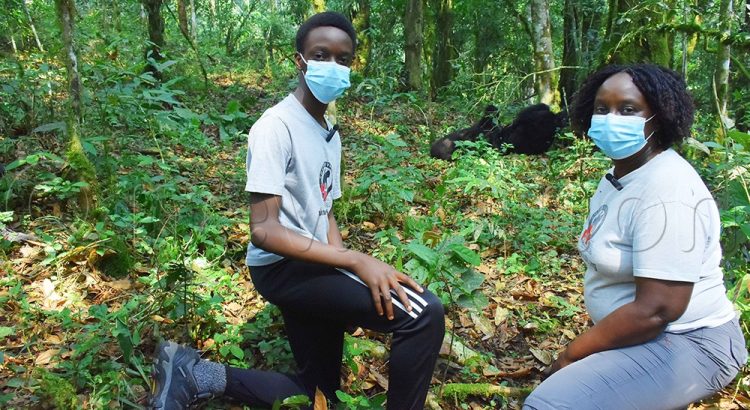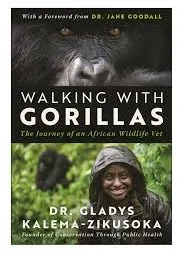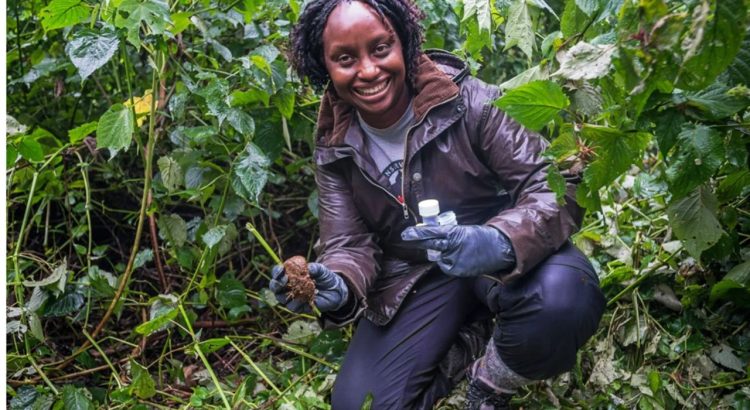SOURCE |  | January 15th, 2025
| January 15th, 2025
The number of mountain gorillas is steadily increasing, which moved them from the status of critically endangered to endangered.
Julius Luwemba
Journalist
@New Vision
Several conservationists have expressed optimism about the rise in gorilla numbers as new births have, in the past, been witnessed within the 27 gorilla families across the four sectors of Bwindi Impenetrable National Park in southwestern Uganda. A total of 459 mountain gorillas were counted in Bwindi during the last census of 2018.
Dr Gladys Kalema-Zikusoka, Uganda’s first wildlife veterinary officer, revealed that a new census will be conducted this year, 2025, “apparently starting in February.”
According to Kalema, the number of mountain gorillas is steadily increasing, which moved them from the status of critically endangered to endangered.
“Only 300 gorillas were recorded in 1997 when I first participated. The numbers are steadily increasing due to several interventions, such as improved veterinary services, community engagement where locals are directly employed by the Uganda Wildlife Authority, and revenue-sharing benefits whereby 20% of the fees from park entrance and 10% off each gorilla permit are given back to the communities,” she explained.

Playful young gorillas swinging up in the trees of Bwindi national park. (Credit: Julius Luwemba)
Dr Kalema made the remarks while leading her 15-year-old son Tendo Zikusoka on a gorilla tracking expedition last weekend.
Although Tendo grew up among the communities of Bwindi, it was his first time tracking gorillas. According to the policy, children below 15 years are not allowed to visit gorillas.
“They carry childhood diseases such as measles, mumps, common flu, cough, among others, which can easily spread to the great apes. Remember humans share 98.4% genetic material with gorillas, and even greater, 98.8% with chimpanzees,” noted the wildlife vet.
This was emphasised by Bashir Hangi, the spokesperson for Uganda Wildlife Authority (UWA), who added that, in addition to diseases, it is more risky for younger children to go to gorillas due to aggression risks.
“There is a call, however, to have the age standardised at 15 years for both mountain gorillas and chimpanzees. This will address increased aggression risk to younger tourists, among other reasons,” Hangi explained.
Meanwhile, upon seeing the gorillas for the first time, the 15-year-old Tendo Zikusoka appealed for concerted efforts to conserve their natural habitats.
“If we cut down forests and destroy wetlands, the wildlife vanishes. As we conserve such habitats, we should also avoid littering plastic material and emitting fumes and gases into the atmosphere,” Tendo implored.

Tendo Zikusoka with his mother, Gladys Kalema, during the gorilla tracking expedition in Bwindi national park. (Credit: Julius Luwemba)
About gorilla census
John Tugumisirize, a ranger guide in the Buhoma sector of Bwindi National Park, said the gorilla census is supposed to be carried out at most every five years.
“This is because gorillas tend to have 4-5 years of child spacing,” Tugumisirize remarked. Mountain gorillas are found only in Uganda, Rwanda, and the Democratic Republic of Congo in the national parks of Bwindi, Volcanoes, and Virungas National Park, respectively.
The previous mountain gorilla census of 2018 in Bwindi-Sarambwe gave an estimate of 459 individuals. Together with the Virunga census results of 2015, the total population of mountain gorillas was estimated at 1,063.
This year’s gorilla census will be coordinated by the International Gorilla Conservation Programme (IGCP), a coalition of conservation organisations in the region. Information from IGCP indicates that the gorilla census does not actually involve counting individual gorillas.
“Survey teams instead search for signs of mountain gorillas, such as trails and footprints, and use these to locate gorilla nest sites, where they collect faecal samples that are stored and used for genetic and pathogen analyses,” states IGCP.
“Ahead of the census, a lot of work is already going on, including planning, engaging stakeholders, and fundraising for the census,” expressed Jean Paul, the IGCP deputy director.
He noted that the upcoming Bwindi census is expected to cost $700,000 (sh2.6b).
“Mountain gorilla censuses are an expensive investment that requires robust planning, mobilisation, fundraising, involvement, and collaboration of all conservation stakeholders,” he noted.
The upcoming Bwindi-Sarambwe population survey of mountain gorillas will be conducted by the protected area authorities in Uganda and the Democratic Republic of Congo (Uganda Wildlife Authority and l’Institut Congolais pour la Conservation de la Nature) under the transboundary framework of the Greater Virunga Transboundary Collaboration.
The census will also be supported by the Rwanda Development Board, Max Planck Institute for Evolutionary Anthropology, Dian Fossey Gorilla Fund, Institute of Tropical Forest Conservation, Gorilla Doctors/Mountain Gorilla Veterinary Project, Conservation Through Public Health (CTPH), Wildlife Conservation Society, WWF Uganda Country Office, Bwindi Mgahinga Conservation Trust, and Primate Expertise, among others.






 | Saturday, September 21, 2024 By
| Saturday, September 21, 2024 By 

